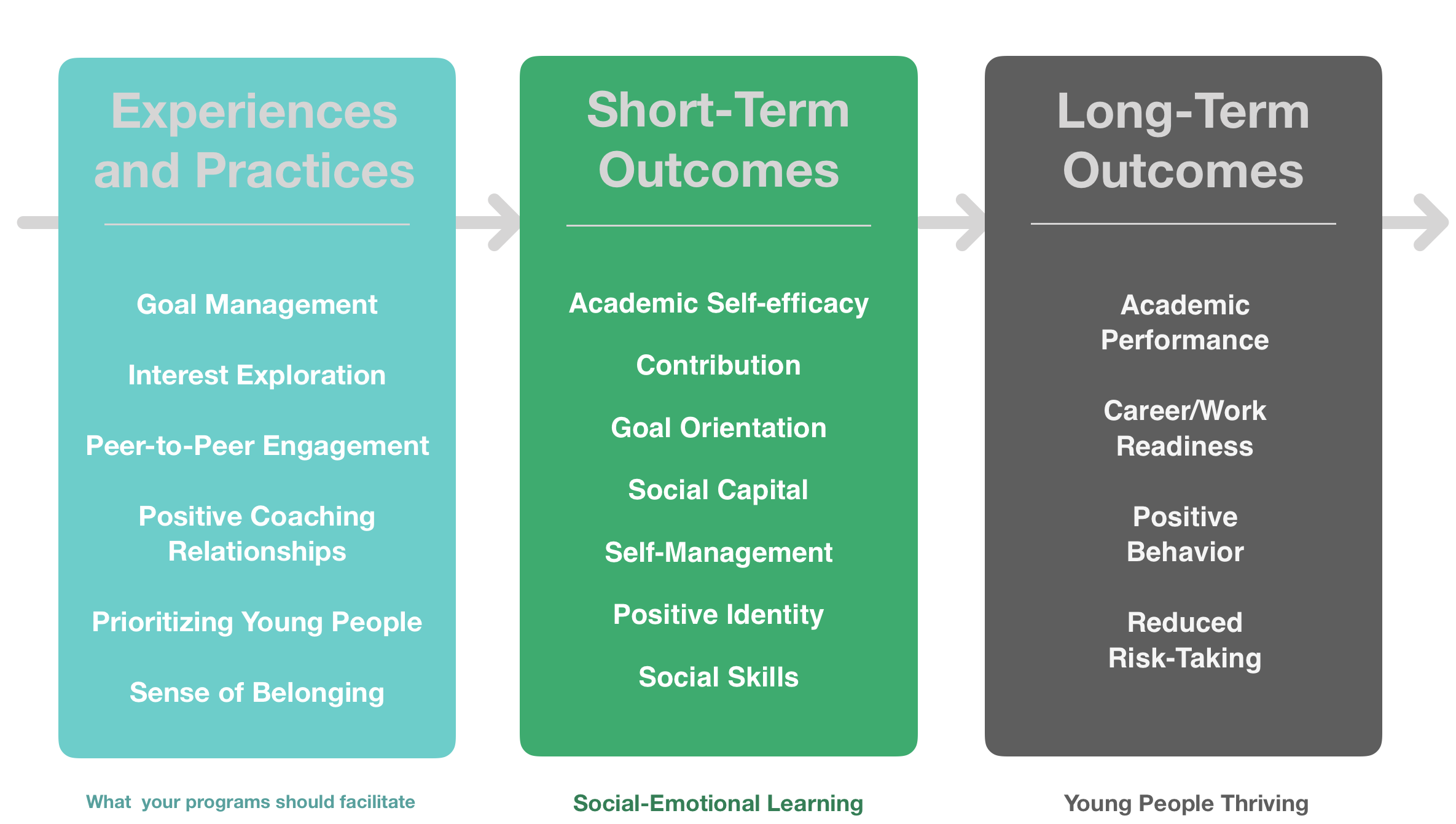Whats Social-Emotional Learning
Let’s start off with understanding social-emotional learning. Social-emotional learning (SEL) is the process through which children and adults acquire and effectively apply the knowledge, attitudes, and skills necessary to understand and manage emotions, set and achieve positive goals, feel and show empathy for others, establish and maintain positive relationships, and make responsible decisions (CASEL, 2017). There is growing evidence that SEL qualities surmount academic or technical skills in their ability to predict employment and earnings (Kautz, Heckman, Diris, ter Weel, & Borghans, 2014), increased academic success, decreased risk, and increased thriving (CASEL, 2017). The demand for such non-academic skills has increased over the past 20 years (Balcar, 2014; Carnevale, 2013; Eger & Grossmann, 2004; International Labor Organization, 2008) and their promotion is more critical than ever — with business and political leaders urging schools to pay more attention to equipping students with skills like problem-solving, critical thinking, communication, collaboration, and self-management, often referred to as “21st Century Skills” (CASEL, 2017).
SEL capacities can be broadly categorized into six main constructs, there are other metrics of measurement of these capacities out there, but for this article, let’s focus on these six broad categories —
- Self-Management. Self-management encompasses a youth’s ability to regulate their emotions and behavior, take positive risks, and persist through life’s challenges. Self- management correlates with longer-term outcomes such as higher grade point averages and standardized test scores, fewer suspensions and expulsions, and improved social development (Bandy & Moore, 2010).
- Social Skills. Youth’s ability to take others’ perspectives into account, develop a sense of caring, and empathy are essential to the development of social skills. Social skills are considered an important part of development because it supports positive social interactions and promotes positive youth <-> environment interactions (Payton, et al., 2008).
- Positive Identity. Youth’s positive identity is an internal sense of self-worth and self-efficacy. A positive identity is important for youth to feel empowered to make decisions for themselves and develop resiliency in the face of challenges. Positive identity is correlated with higher confidence and reduced behavioral problems (McLaughlin, 2000).
- Academic Self-efficacy. A youth’s motivation and perceived mastery towards positive school performance (i.e., academic success) and their general sense of hope in their capacity to attain academic success lends itself to higher grade point averages and standardized test scores, fewer suspensions, and expulsions, and longer-term gains in skills to identify, attain, and retain a career (Afterschool Alliance, 2009; Zins, Weissberg, Wang, & Walberg, 2004).
- Social Capital. A young person’s positive bonds with people and institutions (e.g., school, community center, youth-serving organization). Young people who excel in this capacity have a greater support network and a sense of belonging within their environment. They rely on these people and institutions for help and they have more connections leading to opportunities as a result.
- Contribution. A young person’s desire to give back to the world around them. Young people who excel in this capacity believe it is important to participate in their community. They know how to use their interests and skills to take actions that make their community better.
How you can ensure that youth in your program are receiving these 21st-century skills.
Everything that young people see, think, hear, do and feel is fuel for SEL, but a few key types of experiences are especially effective at boosting SEL growth. It is important that your program staff facilitates the right practices for your youth to thrive. During my work with cutting-edge social-emotional learning tools, four practices have been identified to generate the most impact —
- Goal Management. Plan activities to give young people the chance to practice setting goals, breaking them down into smaller tasks, develop plans of action, and adjust them as necessary.
- Interest Exploration. Provide opportunities for young people to explore potential interests, try new things, broaden their horizons, and take risks in a safe space.
- Peer-to-peer engagement. Encourage young people to work with and learn about others with different backgrounds and perspectives. Promote teamwork, group cohesion, and problem-solving.
- Prioritizing youth. Build meaningful relationships by prioritizing young people: set high expectations for them and invite them to share their unique experiences and passions with the program.
This can be summarised in the visual below.

In conclusion, in an era increasingly focused on academic outcomes, programs for young people need an alternative — a short-term outcome you can measure that is tied to real long-term goals. Social-Emotional Learning provides a meaningful alternative to output measures for all kinds of youth-serving programs.


